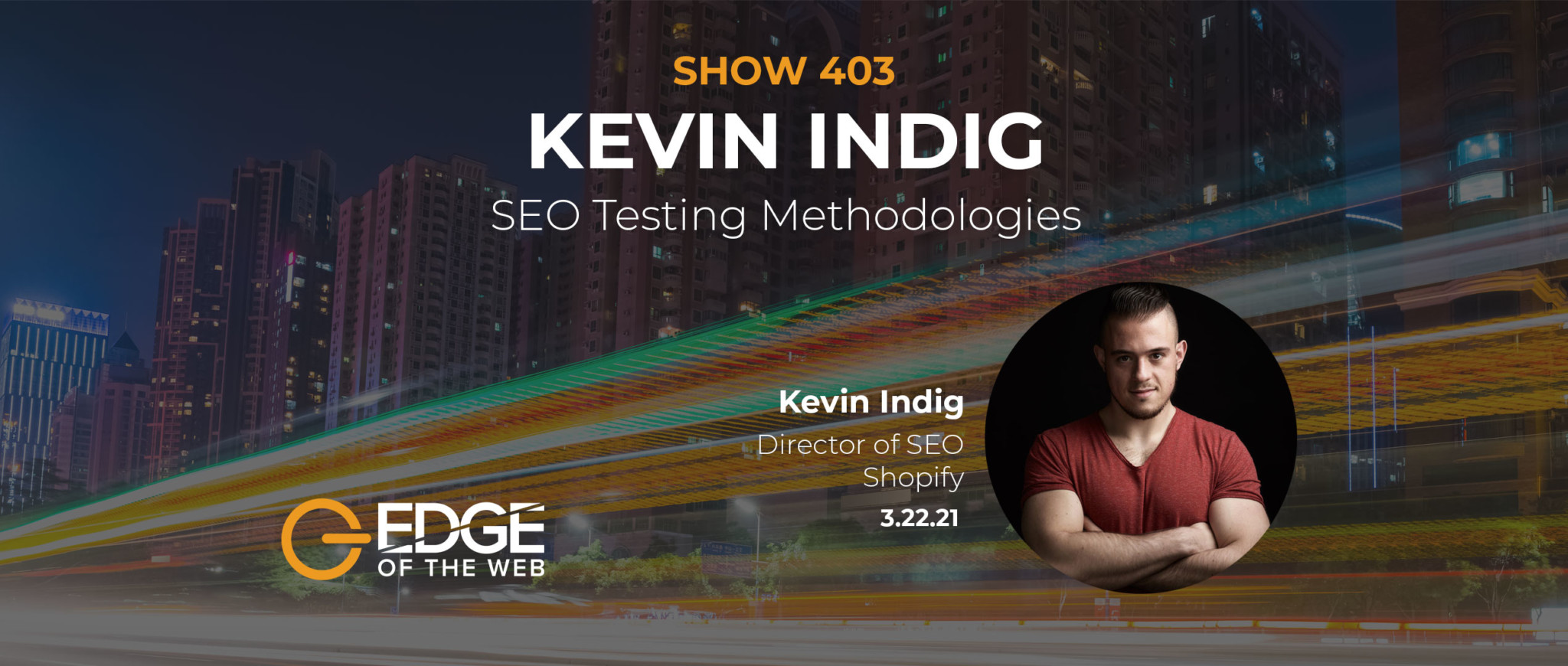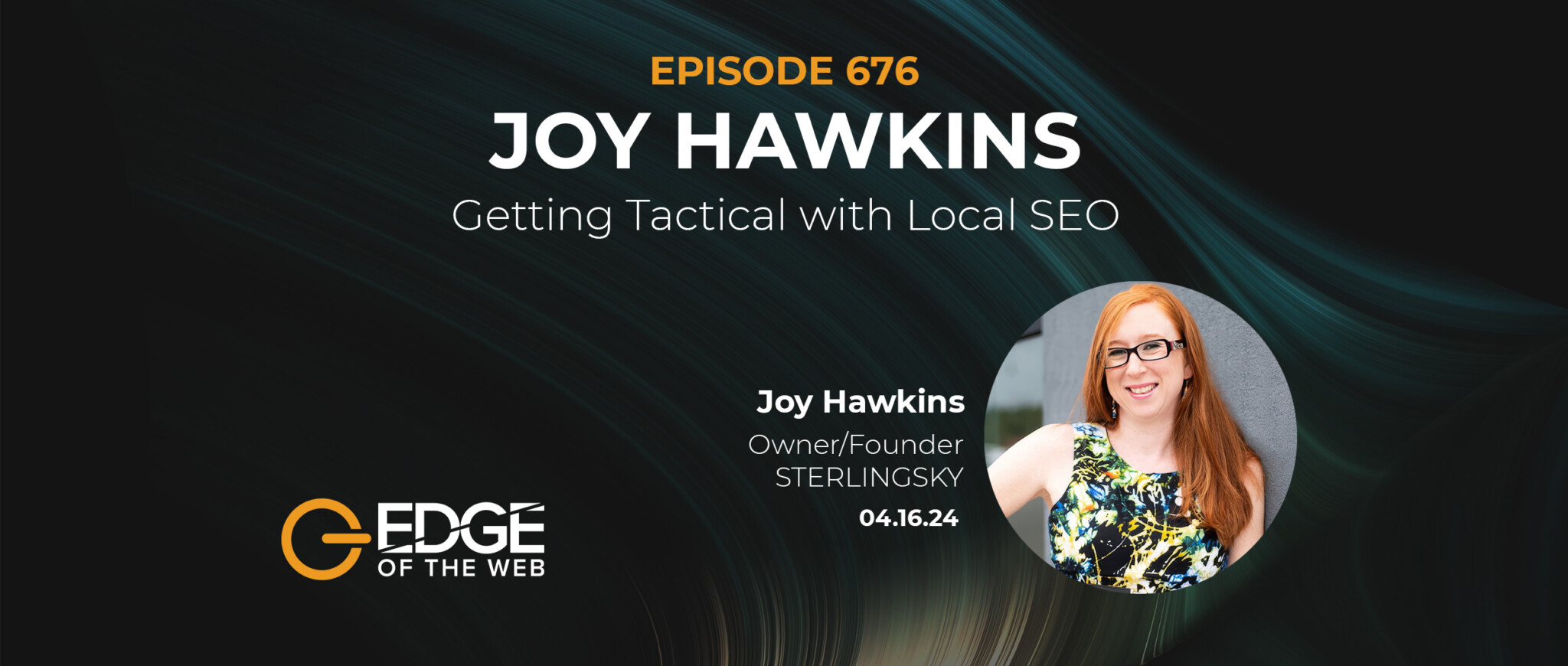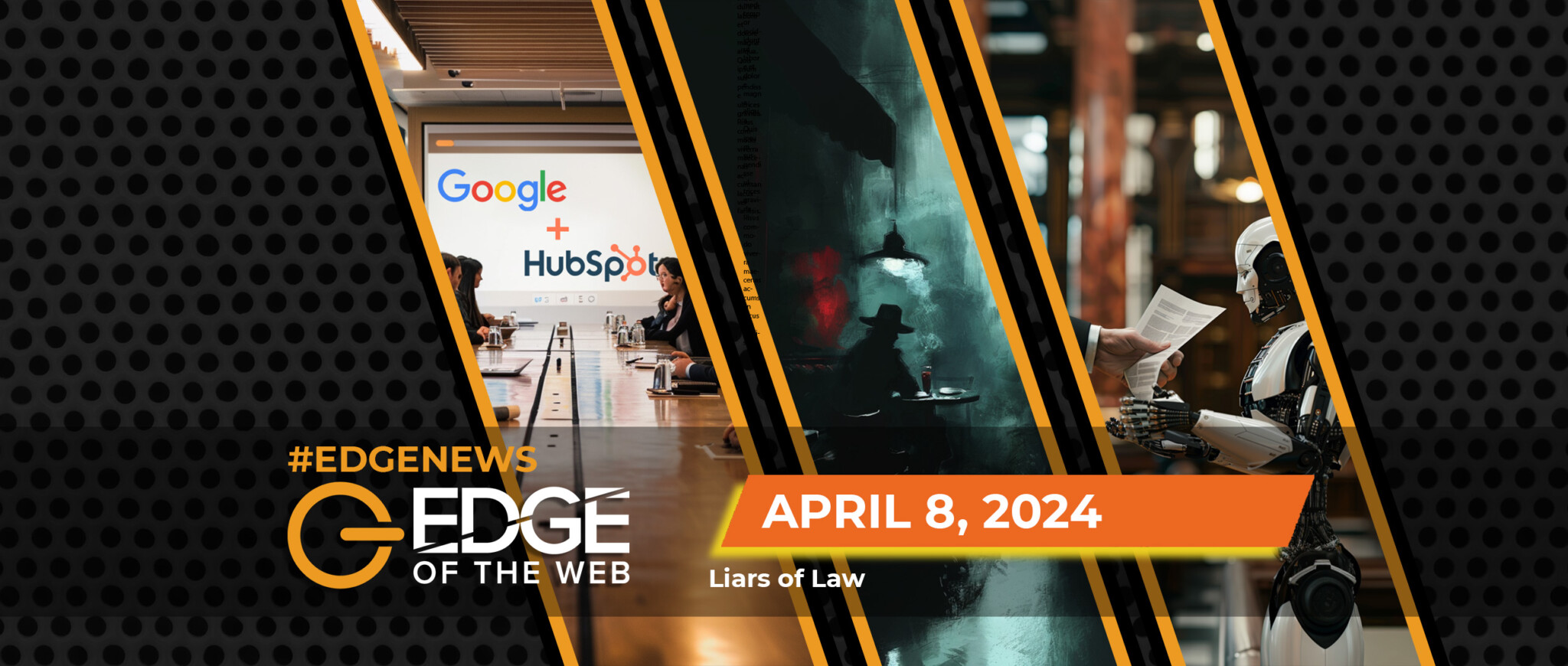For episode 403 of the award-winning EDGE of the Web podcast we continued a conversation with special guest Kevin Indig, Director of SEO at Shopify. Host Erin Sparks spoke with Kevin about the scientific methodology and mindset necessary for SEO improvements as Google evolves. Here’s what we learned:
The Rise of User Intent Above Keywords
The reason SEOs need to be looking way beyond mere keyword rankings has to do with Google’s evolution around understanding user intent. Kevin recently wrote an article about his own journey to understanding user intent and what it means (see Optimizing for User Intent with Content-Tuning). Optimizing a page of content for a handful of keywords isn’t wrong, but it’s also not right. I used to think about topics but what I was really thinking about was user intent. And the thing to keep in mind about Google is that it’s not about understanding or grouping things by topic, it’s all about satisfying user intent. When you optimize for a just a few keywords, you’re missing out on all the other keywords any given page could also rank for if what you get right is the user intent. And Google does all sorts of things with SERP features when it thinks it understands user intent, such as a Google Map pack, the “People also ask” box, an image carousel, related news stories, and so on.
If there’s a transactional intent (like where to order or buy dog food on), then Google will surface results and SERP features to satisfy that intent. Same thing if the query intent is informational (such as wanting to know more about dog breeds) where the SERP features might be knowledge panels and “People also ask” boxes and things like that. By extracting what SERP features Google surfaces for a query, those can be used to understand user intent at scale.
Those different SERP features are also important indicators of how well Google understands any given topic. And Google’s understanding of topics is always changing and evolving. It’s the same way our understanding of things changes over time, the COVID-19 pandemic being a case in point to see how our understanding changed and evolved over the course of 2020.
Part of Google’s evolution has been from understanding entities to a broader understanding of topics, which can be surprisingly tricky to achieve because they can be more abstract than entities. The knowledge graphs now from Google are more topic-based than entity-based. And when Google has a breakthrough in understanding, then there’s a core algorithm update and sites see their traffic tank or increase. AI and natural language processing have really been the main focus of Google, and by extension SEO, for the past five years.
Ditch the SEO Checklist and Start Testing
There was a time when you could go online and just find the latest big checklist of a hundred different SEO things you could do and get pages to rank. Those days are long gone. It’s not that simple these days. You need a more evidence-driven approach.
We have the big-picture elements down we know are important: content, user experience (core web vitals), title tags and so forth. But that’s just a fraction of what we need to know. Searching for information about finances or insurance and Google will put more weight on https as a signal. Search on travel topics and Google might surface more images. Google is adjusting its signals this way on such a granular level beyond what we can comprehend that we just can’t understand with certainty what ranking signals are really going to apply to a query.
The only hope you have of gaining real SEO insights is by testing using rigorous and meticulous methods like any scientist would use. Rolling out a change and seeing traffic increase and calling it a day isn’t good enough, and it’s certainly not a test. You have to reverse it and falsify it to know it’s real and that the change you made cause the result and not something else. SEOs should be doing way more testing than most are doing now. The checklist or blueprint approach is more than just outdated, it’s dangerous. You get your foundational SEO practices in place, as previously mentioned, but from there you have to experiment and test. And there are tools out there to help with that. SEMrush has an A/B test tool called SplitSignal. There’s another one at Trustpilot as well, among others.
There are cases where you don’t have to revert a change to verify what’s happening. If you can group a bunch of pages that use a similar template, you can do more of the classic A/B style of test. If what you’re working on is a more content-driven site, then you have to revert changes to fully understand their impact because you don’t have any kind of control group to test against. But the whole area of SEO testing is rapidly changing and evolving. But you’ll still never be able to say with 100% confidence these are reasons that caused the outcomes. Just like with the COVID vaccines. There are so many other factors at play you can only say with some reasonable amount of confidence that you can expect the results to come out a certain way.
We have to acknowledge the limits of the SEO tests themselves. But the more you do, the better you get at it and the more confidence you’ll have about the results in your vertical. And when you do find something that works and can verify why it works, then you roll it out as quickly as possible.
It’s time to give up on the idea that SEOs are like mechanics. There’s more to it than that. SEOs have to be more like doctors, or product developers, or engineers. SEOs come to the table with bold asks and predictions for outcomes, but when the c-suite asks for the evidence on which SEOs are basing their conclusions, the SEOs get all mad and defensive. SEOs have to take a higher road, do better, and level up.
If you really want to weed out the toxic, bad SEOs, all you have to do is hold them accountable for revenue. Evaluate their success based on how much their work contributes to the company’s revenues. SEOs who pitch a company and insist they be evaluated or paid based on organic traffic or keyword rankings should be considered a red flag. It’s not good enough. Rankings and traffic mean nothing if visitors don’t convert into leads. And leads mean nothing if they don’t convert into purchases. Revenue has to become the SEO’s north star.

























